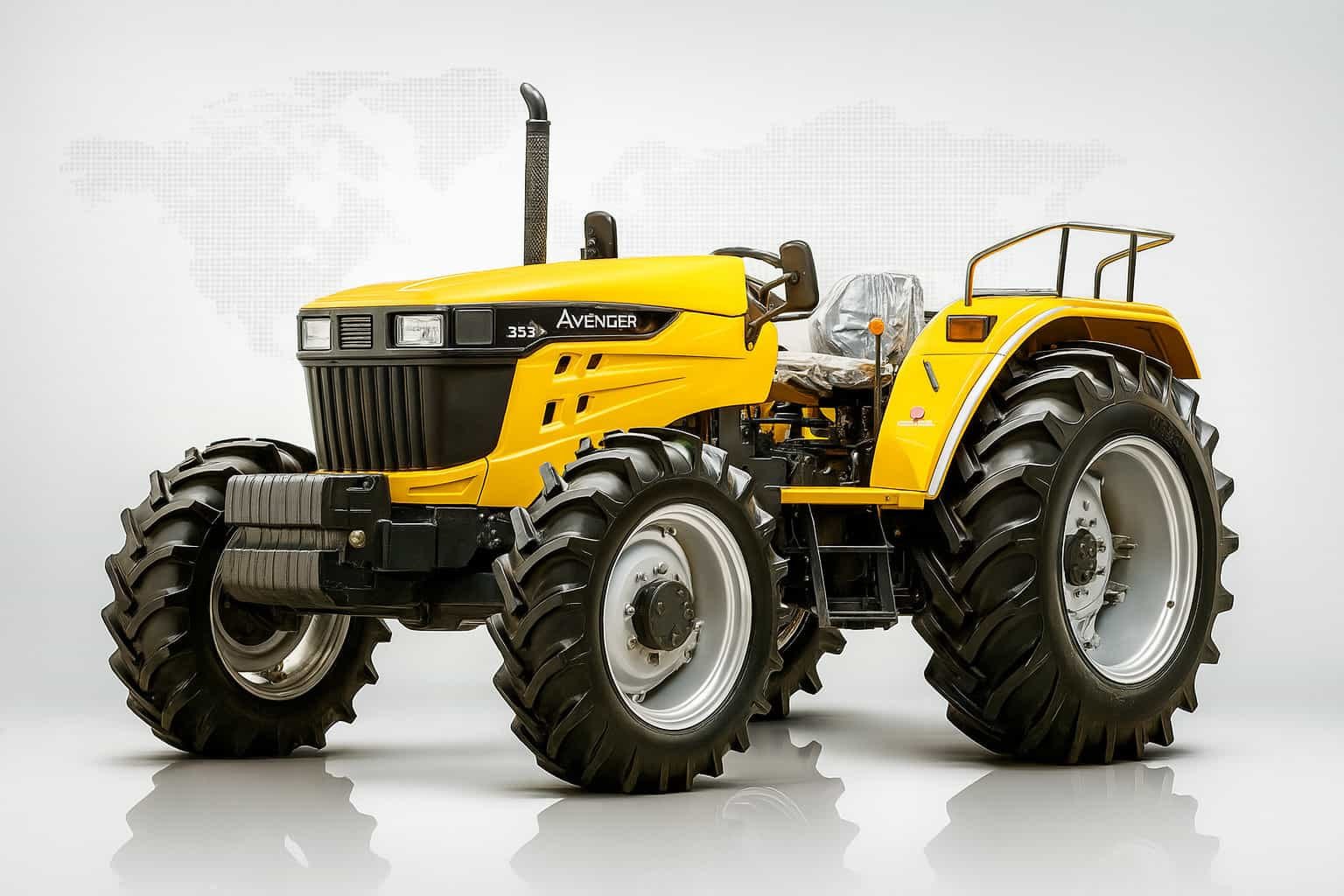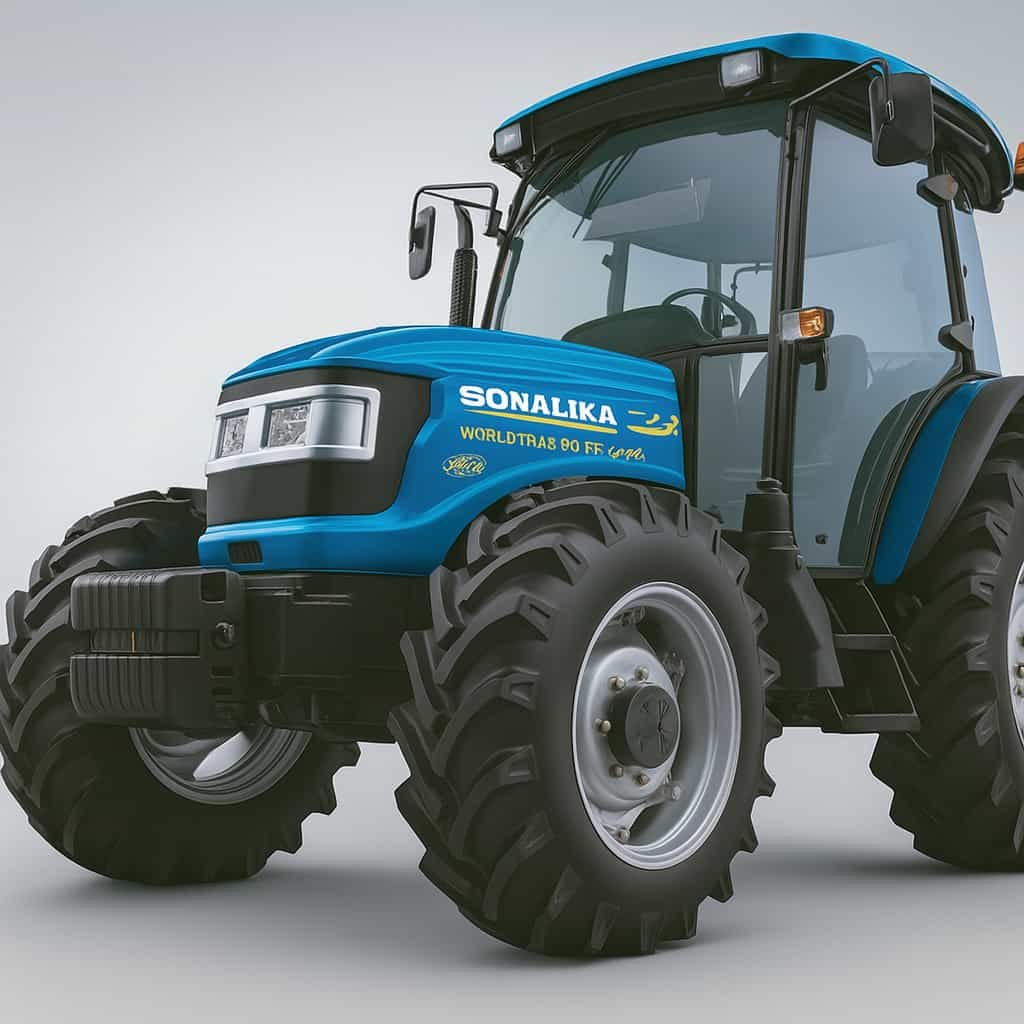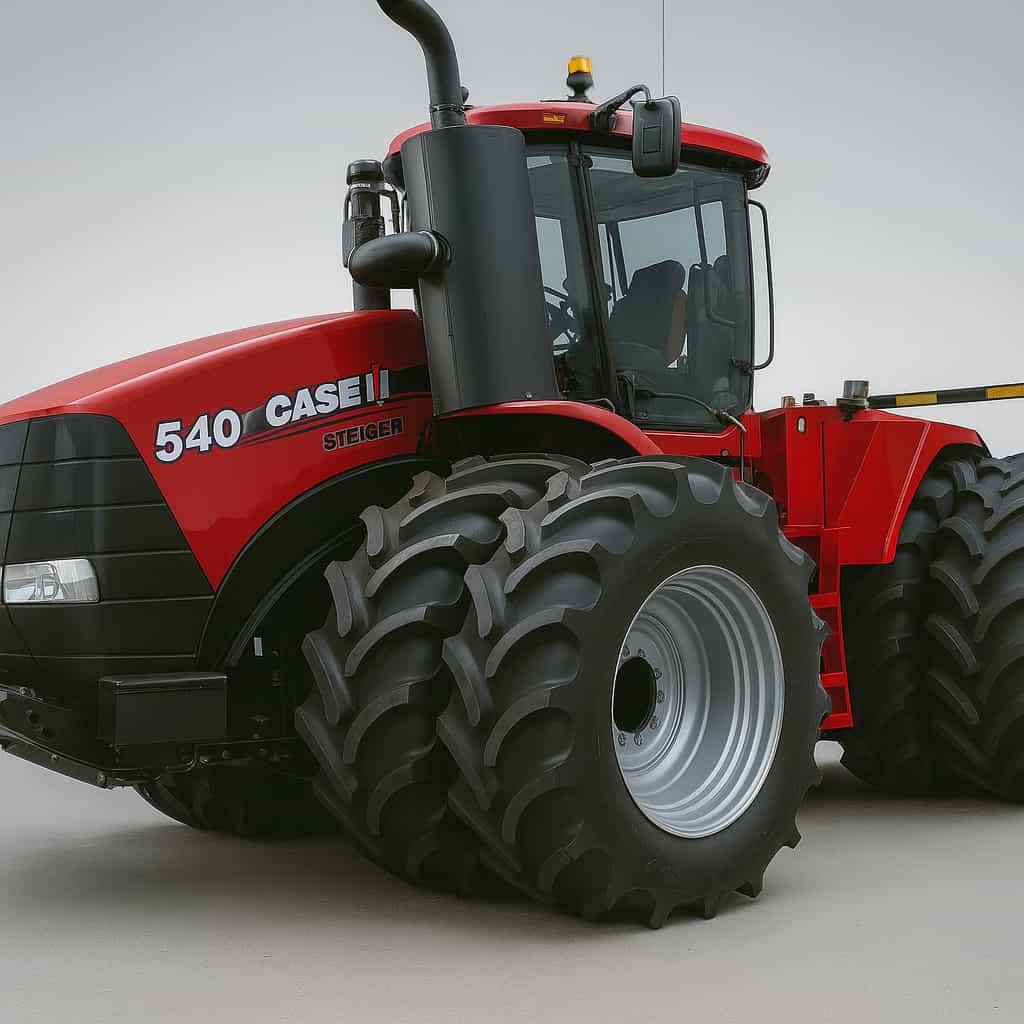What is a 4WD Tractor?
A 4WD tractor, or four-wheel-drive tractor, is an agricultural vehicle that provides power to all four wheels simultaneously, enhancing traction and stability on uneven or slippery terrain.

Key Features of a 4WD Tractor:
- Enhanced Traction: All four wheels receive power, improving grip on various surfaces.
- Improved Stability: Better balance on slopes and rough terrain.
- Increased Power Distribution: Equally spreads engine power across all wheels, reducing wheel slip.
Applications:
- Field Plowing: Effective in muddy or rough fields.
- Heavy Load Transport: Ideal for towing and carrying heavy agricultural equipment.
- Versatile Usage: Suitable for multiple tasks like planting, harvesting, and land preparation.
Operational Principles:
- Power Transmission: Engine power is distributed to both front and rear axles.
- Differential Locks: Can lock wheels on the same axle to prevent slipping.
- Axle Synchronization: Ensures all wheels rotate at the appropriate speeds.
4WD tractors are essential for efficient and reliable agricultural operations, particularly in challenging field conditions.
What are the benefits of a 4WD tractor?
A 4WD tractor offers enhanced traction, greater stability, and improved performance on various terrains. These attributes make it highly suitable for challenging agricultural tasks.

Key Benefits of a 4WD Tractor:
- Enhanced Traction: With power distributed to all four wheels, 4WD tractors can better handle slippery or uneven surfaces, such as mud or slopes.
- Greater Stability: The uniform power distribution reduces the likelihood of wheel slippage, ensuring stable operation even on rough terrains.
- Improved Performance: 4WD tractors are capable of pulling heavier loads and operating larger implements, increasing overall efficiency in farming tasks.
Functional Advantages:
- Versatility: Suitable for a wide range of agricultural activities, from plowing to hauling.
- Fuel Efficiency: Despite the higher initial cost, the efficiency in difficult conditions can result in long-term fuel savings.
- Reduced Soil Compaction: Balanced power distribution minimizes soil compaction, promoting healthier crop growth.
In summary, a 4WD tractor is a versatile, efficient, and stable choice for modern agriculture, capable of tackling a variety of challenging environments.
What are the disadvantages of 4 wheel drive?
Four-wheel drive (4WD) systems can provide better traction and control, but they also come with several disadvantages including increased cost, reduced fuel efficiency, and added vehicle weight.

Key Disadvantages of 4 Wheel Drive:
- Increased Cost: 4WD vehicles are generally more expensive to purchase and maintain due to the complexity of the drivetrain.
- Reduced Fuel Efficiency: The added weight and mechanical components of a 4WD system often result in lower fuel economy compared to two-wheel drive vehicles.
- Higher Maintenance: More parts mean more potential for breakdowns and higher repair costs.
- Increased Weight: The 4WD system adds significant weight, which can negatively affect acceleration and handling.
- Complexity: The intricate nature of 4WD systems can make troubleshooting and repairs more challenging.
While 4WD can be beneficial in off-road conditions or poor weather, these disadvantages should be carefully considered when choosing a vehicle.
What is the difference between a 2WD and 4WD tractor?
A 2WD (Two-Wheel Drive) tractor powers only the rear wheels, whereas a 4WD (Four-Wheel Drive) tractor powers all four wheels, providing better traction and stability on uneven terrain.
Key Differences
- Power Distribution:
- 2WD: Power is delivered solely to the rear wheels.
- 4WD: Power is distributed to both front and rear wheels.
- Traction:
- 2WD: Less traction, suitable for flat, dry fields.
- 4WD: Enhanced traction, ideal for uneven or muddy grounds.
- Stability:
- 2WD: Less stable on slopes or rough terrain.
- 4WD: Improved stability in challenging conditions.
- Cost and Maintenance:
- 2WD: Generally cheaper and easier to maintain.
- 4WD: Higher initial cost and more complex maintenance.
Usage Scenarios
- 2WD: Best for light-duty tasks like mowing or hauling on level surfaces.
- 4WD: Optimal for heavy-duty agricultural tasks, especially in difficult terrain.
Understanding these differences is crucial for selecting the right tractor based on specific farming needs and terrain conditions.
Which engine is better, a 3 cylinder or a 4 cylinder?
A 3-cylinder engine generally offers better fuel efficiency and compact design, while a 4-cylinder engine provides more power and smoother performance. The choice depends on your specific needs, such as fuel economy or driving performance.

Advantages of a 3-Cylinder Engine
- Fuel Efficiency: Fewer cylinders mean less fuel consumption.
- Compact Size: Easier to fit in smaller vehicle frames.
- Lower Emissions: Generally produce fewer emissions due to less fuel usage.
Advantages of a 4-Cylinder Engine
- Power Output: More cylinders allow for higher power and torque.
- Smooth Operation: More balanced and less vibration.
- Versatility: Suitable for a wide range of vehicle types, from compact cars to midsize SUVs.
Considerations for Choosing
- Fuel Economy: Choose a 3-cylinder for better mileage.
- Performance Needs: Opt for a 4-cylinder if you need more power.
- Vehicle Type: Smaller cars might benefit from a 3-cylinder, whereas larger vehicles often perform better with a 4-cylinder.
In summary, the best engine for you depends on your priorities and the type of vehicle you drive.

